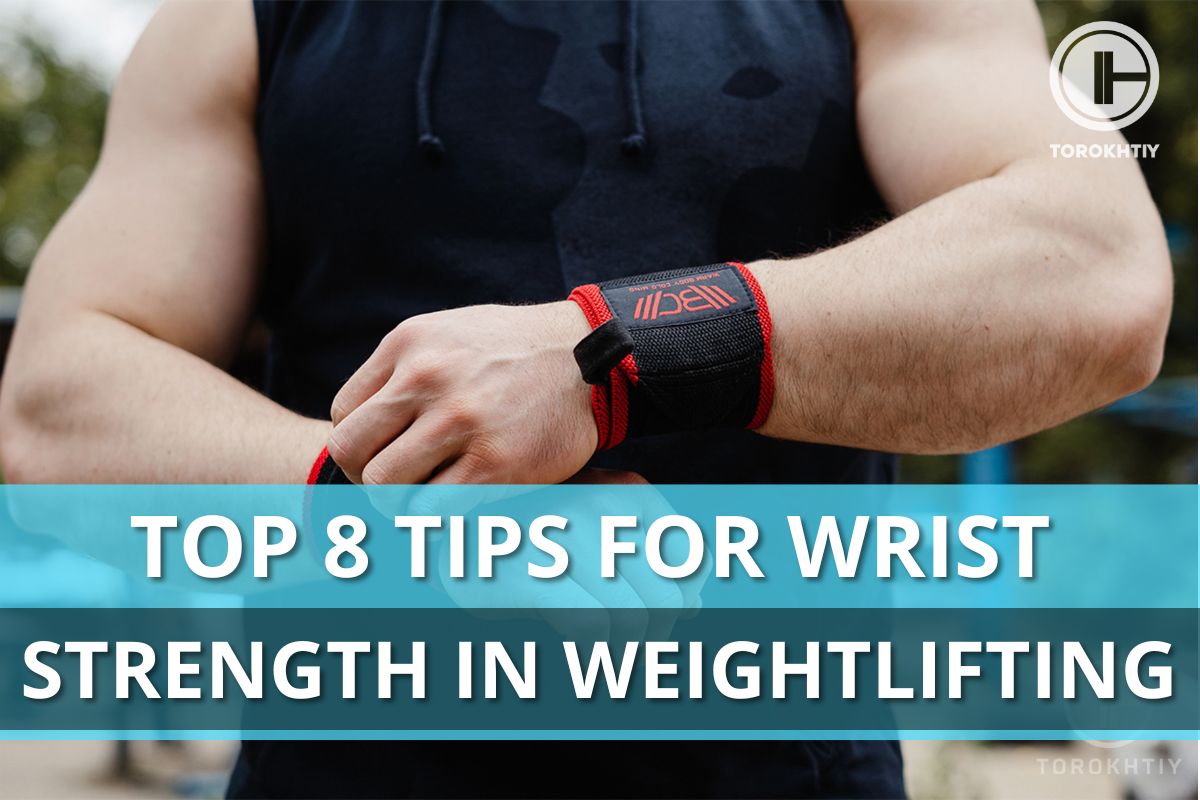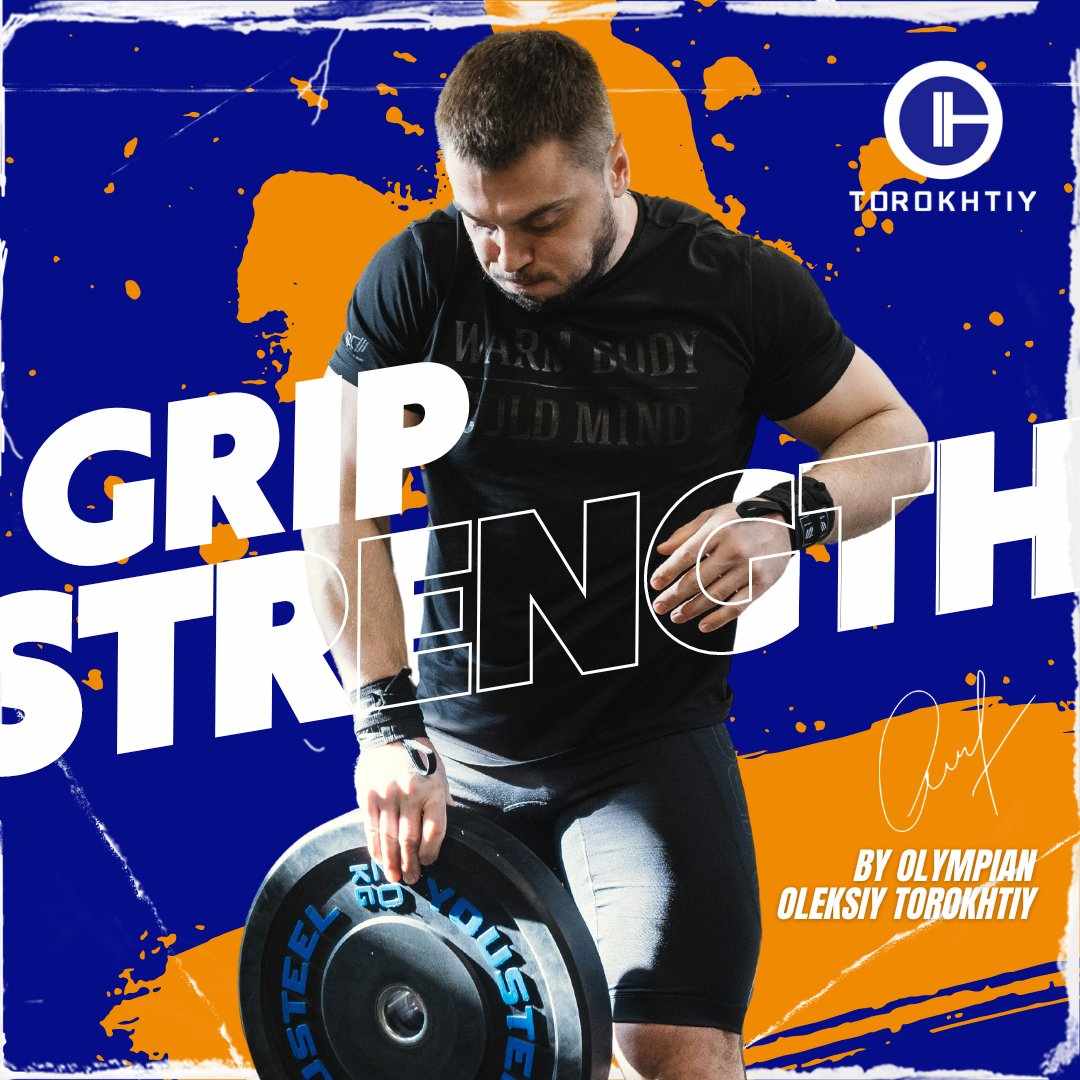Top 8 Tips For Wrist Strength In Weightlifting
Author:
Unlock your full potential by engaging with our experts and community! Have questions about your fitness journey or looking for expert advice on weightlifting techniques? Don’t hesitate — leave a comment below and Sergii Putsov will provide a personalized answer and insights to help you reach your goals.
Torokhtiy is reader-supported. Some links are affiliate links, and we may earn a commission at no extra cost to you. See our disclosure page for details.

This article also available as audio. Check this out!
Subscribe and listen it anywhere:
For high weightlifting results, we constantly seek new tips and methods to improve technique and figure out the most beneficial individual angles, follow different ways to make legs and back more explosive, develop shoulder mobility and increase strength endurance.
But another vital body part is often overlooked – wrists and forearm muscles which determine grip strength. In my blog, I have already written a lot about the importance of the hook grip. I have picked all this information for you at the end of the article.
You may like it:
- Detailed Olympic Weightlifting Program For Beginners
- 12-Week Weightlifting Program For Women (Detailed Example)
- Create Your Olympic Weightlifting Program (Examples Included)
Forearms are involved in all weightlifting exercises which include holding a bar. Even heavy squats, both front and back ones, demand wrist joint mobility and muscle strength.
Since joints that are close around work in coordination, the forearm tonus and condition influence the entire upper limb. Both for weightlifting and functional fitness, strengthening wrists and forearms is crucial for efficient training.
The forearm includes plenty of tiny and long muscles, including flexors and extensors, pronators and supinators. Each of these muscles is responsible for coordinated wrist movement.
I want to share my exercises and methods to strengthen wrists and forearms, which, in my opinion, all athletes will find helpful.
When I was on the junior national team, we often spent time in training camps together with the gymnastics national team. We used to share our injury experiences and methods to strengthen weak points in our sports.
My first two favorite exercises for wrist training were actually learned from gymnasts.
1. Wrist mobilization
This set increases wrist joint and tendon mobility before the main load with the bar. Perform these exercises after the main warm-up. Choose the most comfortable tension in all planes and do 2-3 circles for 6-8 reps one after another.
2. Gymnastic bodyweight curls
Press fingers to the floor tightly in order to involve all tiny and long muscles of both wrist and forearm.
Maintain comfortable tension and pace. The angle and the amount of load can be increased while moving your wrists forward – farther from the body. You can use this exercise during any preparation period (15-20 reps, 2-3 sets, 1-2 times a week).
3. Plate juggling
It is not only an exercise, but rather an ancient weightlifting tradition – to have some fun after a workout. We used to compete in our team to find out who can do more reps with the heaviest plate.
When we were children, 10-15 kilos was enough for us, but later we chose a 25-kg plate. The forward and backward rotation of a plate with one arm is another cool variation and indicator of strong forearms.
Such advanced proficiency and strength are mainly a feature of top athletes at national and international levels.
I recommend doing 2-3 sets for 15-20 reps of this exercise, 1-2 times a week.
Follow us!

Free!
Get a 2-week Weightlifting Program as a bonus for the subscription to kickstart your training plan!

Free!
4. Wrist elevator
This machine was nearly at every soviet old-school gym. Athletes were supposed to lift some weight hung on a rope while rotating the bar. One of the benefits is that forearms are actively involved both when lifting the weight and lowering it.
In this video, I use a simplified variation with a kettlebell and resistance band. You can actually get Popeye forearms with this exercise)))
I recommend doing 2-3 sets of this exercise at a slow pace 1-2 times a week.
5. Barbell wrist flexion
It is one of the most effective exercises for wrist rotators. You can use a barbell, dumbbells, or even barbell collars for it.
Sit on a bench and put your forearms on it with palms up holding the bar. When flexing wrists up, curl them as far as you can; when moving downward, stretch your fingers in a controlled way. You can do this exercise with the reverse forearm position to involve wrist extensors.
Do 2-3 sets of the wrist flexion for 12 and up to your maximum number of reps 1-2 times a week.
6. Disc hold
It is an ancient exercise proved by both time and professional strongmen. You can use it as a training exercise or as a test of grip strength.
Everything is rather simple here: stand straight, tense your back muscles and abs and pinch hold plates for time. I recommend starting with 10 kg for 20-40 seconds, but you should aim to hold 25-kilo plates for as long as you can.
A popular modification of this exercise is the farmer’s walk which actively involves stabilizers. An athlete is supposed to hold the weight and walk a particular distance. A more simplified variation is holding/walking with some weight in only one hand. This exercise is perfectly combined with wrist flexion in a set.
You can give 1-2 sets of such stress to your wrists once in 1-2 weeks. And remember not to hold your breath.
7. Reverse biceps curls
Most bodybuilders use this exercise to pump their biceps, but it is also effective to involve forearm extensors.
You can use a regular bar, EZ-bar, dumbbells, and kettlebells for this exercise. Stand straight and tense your entire torso, pointing your chin up and forward. Use the overhand shoulder-width grip and keep your wrists straight. It is important to press the elbows towards your torso all the time. If the bar goes forward too much, it may cause injuries. Bend your elbows and lift the weight upward to the upper chest and collar bones. Make a 2-3-second pause at the top point and start lowering the weight slowly in a controlled way. Keep a slight elbow bend at the bottom point to maintain the tension.
I recommend 2-3 sets for 12 and up to the maximum number of reps, 1-2 times a week during the preparatory period.
8. Regular-grip work
In my opinion, this simple method of developing forearm, wrist and overall hand strength is highly underestimated. I think that weightlifters should use the regular grip with no lifting straps during the transition and preparatory periods whenever it is reasonable. However, I’m not saying that you should do the hang snatch of 80% for 3 reps with the regular grip, this is where straps actually come into play. But all muscle snatches, auxiliary deadlifts, and warm-up sets up to 50% SHOULD be done with the regular grip. It consistently strengthens a weightlifter’s grip.
In conclusion, remember that one of the most crucial principles of effective training is method and exercise variety. Use and combine all these exercises and tips to get a strong and reliable grip and make your snatch and clean & jerk grow!
Related Articles:
- Hook Grip VS Regular Grip for WL
- What Is the Difference Between a Hookgrip and a Regular Grip?
- Hookgrip: Problems and Solutions
- How to Properly Hook Grip the Bar
- How to Use Wrist Wraps
- What Do Wrist Wraps Do
You might be interested in:
Why Trust Us?
With over 20 years in Olympic weightlifting, strength training, nutrition coaching, and general fitness our team does its best to provide the audience with ultimate support and meet the needs and requirements of advanced athletes and professional lifters, as well as people who strive to open new opportunities and develop their physical capabilities with us.
By trusting the recommendations of our certified experts in coaching, nutrition, and sports training programming, as well as scientific consultants, and physiotherapists, we provide you with thorough, well-considered, and scientifically proven content. All the information given in the articles concerning workout programming, separate exercises, and athletic performance, in general, is based on verified data.
The product testing process is described in more detail here.
Author: Sergii Putsov
Head of Sport Science, PhD
Best Results: Snatch – 165 kg,
C&J – 200 kg
Sergii Putsov, Ph.D., is a former professional weightlifter and National team member, achieving multiple medals in the 94 kg weight category at national competitions. With a Master’s degree in “Olympic & Professional Sport Training” and a Sport Science Ph.D. from the International Olympic Academy, Greece, Sergii now leads as the Head of Sport Science. He specializes in designing training programs, writing insightful blog articles, providing live commentary at international weightlifting events, and conducting educational seminars worldwide alongside Olympic weightlifting expert Oleksiy Torokhtiy.









Still have questions after reading our article? Unlock your full potential by engaging with our experts and community! Don’t hesitate — leave a comment below and Sergii Putsov will provide a personalized answer and insights to help you reach your goals.